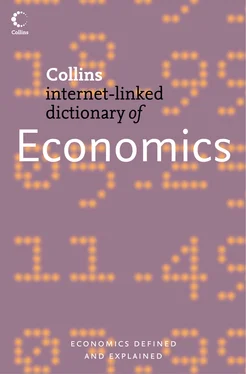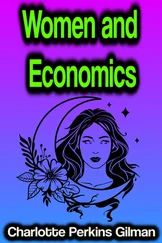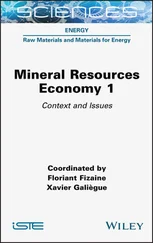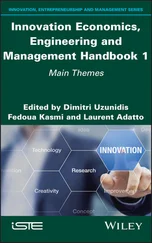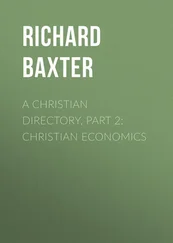Dr. Pass - Economics
Здесь есть возможность читать онлайн «Dr. Pass - Economics» — ознакомительный отрывок электронной книги совершенно бесплатно, а после прочтения отрывка купить полную версию. В некоторых случаях можно слушать аудио, скачать через торрент в формате fb2 и присутствует краткое содержание. Жанр: unrecognised, на английском языке. Описание произведения, (предисловие) а так же отзывы посетителей доступны на портале библиотеки ЛибКат.
- Название:Economics
- Автор:
- Жанр:
- Год:неизвестен
- ISBN:нет данных
- Рейтинг книги:4 / 5. Голосов: 1
-
Избранное:Добавить в избранное
- Отзывы:
-
Ваша оценка:
- 80
- 1
- 2
- 3
- 4
- 5
Economics: краткое содержание, описание и аннотация
Предлагаем к чтению аннотацию, описание, краткое содержание или предисловие (зависит от того, что написал сам автор книги «Economics»). Если вы не нашли необходимую информацию о книге — напишите в комментариях, мы постараемся отыскать её.
Economics — читать онлайн ознакомительный отрывок
Ниже представлен текст книги, разбитый по страницам. Система сохранения места последней прочитанной страницы, позволяет с удобством читать онлайн бесплатно книгу «Economics», без необходимости каждый раз заново искать на чём Вы остановились. Поставьте закладку, и сможете в любой момент перейти на страницу, на которой закончили чтение.
Интервал:
Закладка:
bank loanthe advance of a specified sum of money to an individual or business (the borrower) by a COMMERCIAL BANK, SAVINGS BANK, etc. (the lender). A bank loan is a form of CREDIT that is often extended for a specified period of time, usually on fixed-interest terms related to the base INTEREST RATE, with the principal being repaid either on a regular instalment basis or in full on the appointed redemption date. Alternatively, a bank loan may take the form of overdraft facilities under which customers can borrow as much money as they require up to a pre-arranged total limit and are charged interest on outstanding balances.
In the case of business borrowers, bank loans are used to finance WORKING CAPITAL requirements and are often renegotiated shortly before expiring to provide the borrower with a ‘revolving’ line of credit.
Depending on the nature of the loan and the degree of risk involved, bank loans may be unsecured or secured, the latter requiring the borrower to deposit with the bank COLLATERAL SECURITY (e.g. title deeds to a house) to cover against default on the loan.
bank notethe paper CURRENCY issued by a CENTRAL BANK which forms part of a country’s MONEY SUPPLY. Bank notes in the main constitute the ‘high value’ part of the money supply. See MINT, LEGAL TENDER, FIDUCIARY ISSUE, BANK OF ENGLAND.
Bank of Englandthe CENTRAL BANK of the UK, which acts as banker to the government and the BANKING SYSTEM and acts as the authority responsible for implementing MONETARY POLICY. The Bank of England handles the government’s financial accounts in conjunction with the TREASURY, taking in receipts from taxation and the sale of government assets, and making disbursements to the various government departments to fund their activities. The bank acts as the government’s broker in its borrowing and lending operations, issuing and dealing in government BONDS and TREASURY BILLS to underpin its year-to-year budgetary position and management of the country’s NATIONAL DEBT.
COMMERCIAL BANKS hold accounts with the Bank of England and, in its role as banker to the banking system, the Bank makes it possible for banks to settle their indebtedness with one another by adjusting their accounts as appropriate (see CLEARING HOUSE SYSTEM).
The Bank of England and its satellite, the Royal Mint, are responsible for issuing the country’s basic stock of money – LEGAL TENDER, consisting of bank notes and coins (see MONEY SUPPLY). The Bank occupies a key role in the implementation of monetary policy through controls on the money supply, influencing the level of bank deposits and credit creation by the financial institutions, particularly commercial banks (see BANK DEPOSIT CREATION), while the MONETARY POLICY COMMITTEE has the responsibility for setting ‘official’ INTEREST RATES in the UK, which in turn determines all other short-term interest rates (BASE RATE, BILL DISCOUNTING INTEREST RATE, INTERBANK CLEARING INTEREST RATE).
The Bank is also responsible for managing the country’s EXCHANGE RATE and holding the country’s stock of INTERNATIONAL RESERVES to be used in the financing of balance-of-payments deficits. The Bank of England operates a ‘Foreign Exchange Equalization Account’ that it uses to intervene in the FOREIGN EXCHANGE MARKET, buying and selling currencies to support the exchange rate at a particular level or to ensure that it falls (depreciates) or rises (appreciates) in an ‘orderly’ manner. See LENDER OF LAST RESORT.
bank ratethe former ‘official’ INTEREST RATE that was administered by the government as part of MONETARY POLICY in controlling the economy. Bank rate operated as the BASE RATE for the banking system, influencing interest rates charged on bank loans, mortgages and instalment credit. Bank rate was replaced in 1972 by the ‘minimum lending rate’, which itself was abolished in 1984. The ‘official’ interest rate is now set by the MONETARY POLICY COMMITTEE of the BANK OF ENGLAND. See Fig. 125.
bankruptcysee INSOLVENCY.
bank statementa periodic record of an individual’s or business’s transactions with a BANK (or BUILDING SOCIETY) which itemizes, on the one hand, cash deposits and cheques paid in, and, on the other hand, cash withdrawals and cheques drawn and presented against the account.
bar chart or histograma chart that portrays data in pictorial form and shows the relative size of each category in a total by means of the relative height of its ‘bar’ or ‘block’.
bargainingsee BARTER, COLLECTIVE BARGAINING.
barometric forecastssee FORECASTING.
barometric price leadersee PRICE LEADER.
barriers to entryan element of MARKET STRUCTURE that refers to obstacles in the way of potential newcomers to a MARKET. These obstacles operate in a number of ways to discourage entry:
(a) lower cost advantages to established firms, arising from the possession of substantial market shares and the realization of ECONOMIES OF LARGE SCALE production and distribution;
(b) strong consumer preferences for the products of established firms, resulting from PRODUCT DIFFERENTIATION activities;
(c) the control of essential raw materials, technology and market outlets by established firms, either through direct ownership or through PATENTS, FRANCHISES and EXCLUSIVE DEALING CONTRACTS;
(d) large capital outlays required by entrants to set up production and to cover losses during the initial entry phase.
The economic significance of barriers to entry lies in their capacity for blocking MARKET ENTRY, thereby allowing established firms to earn ABOVE NORMAL PROFIT and affecting the RESOURCE ALLOCATION function of markets.
One, or some combination, of the above factors may pose particular problems for a small-scale, GREENFIELD type of entrant. However, they may be of little consequence to a large conglomerate firm possessing ample financial resources that chooses to effect entry by MERGER with, or TAKEOVER of, an established producer. Moreover, the basic assumption of much entry theory – that established firms invariably possess advantages over potential entrants – must also be challenged. In a dynamic market situation, entrants may be in a position to introduce new technology ahead of existing firms or to develop innovative new products, thereby giving them COMPETITIVE ADVANTAGES over established firms.
For example, the introduction of FLEXIBLE MANUFACTURING SYSTEMS has enabled small entrant firms to secure similar cost advantages to their larger established rivals’ exploitation of economies of scale, while giving them greater adaptability to rapid changes in customers demands. Changes in distribution channels likewise have provided firms with entry opportunities. For example, E-COMMERCE on the INTERNET has enabled small firms to tap into markets at low cost and to sell their products at lower prices directly to customers than rivals using traditional wholesaler-retailer networks (see DIRECT SELLING/MARKETING). See also CONDITION OF ENTRY, LIMIT PRICING, POTENTIAL ENTRANT, OLIGOPOLY, MONOPOLY, MOBILITY BARRIERS.
barriers to exitelements of MARKET STRUCTURE that refer to obstacles in the way of a firm contemplating leaving a MARKET which serve to keep the firm in the market despite falling sales and profitability. Exit barriers include: whether the firm owns the assets it uses or leases them; whether assets are special-purpose or can be redeployed to other uses; whether assets are resaleable in second-hand markets; the extent of market excess capacity and the extent of shared production and distribution facilities. Barriers to exit determine the ease with which firms can leave declining markets and thus affect both the profitability of firms and the smooth functioning of markets.
Читать дальшеИнтервал:
Закладка:
Похожие книги на «Economics»
Представляем Вашему вниманию похожие книги на «Economics» списком для выбора. Мы отобрали схожую по названию и смыслу литературу в надежде предоставить читателям больше вариантов отыскать новые, интересные, ещё непрочитанные произведения.
Обсуждение, отзывы о книге «Economics» и просто собственные мнения читателей. Оставьте ваши комментарии, напишите, что Вы думаете о произведении, его смысле или главных героях. Укажите что конкретно понравилось, а что нет, и почему Вы так считаете.
